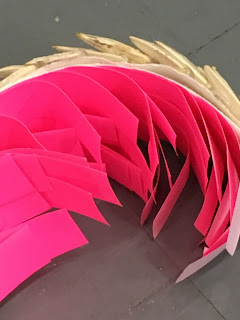Sunday, 28 February 2016
Trying out costume ideas for Circus Between Worlds
Given that my original proposal induced horrid feelings of nausea for the performers, I am further developing my ideas for my performance that will be part of Circus Between Worlds in Glasgow International Festival of Visual Art in April.
I am interested in creating sculptural forms for the performers to wear that a restrictive in some way.
This funnel shape blocks out all peripheral vision, and impacts on the performers spatial awareness.
Thursday, 25 February 2016
MA & Other Post Graduates 2016 exhibition at the Atkinson Gallery, Somerset
My work, Strut your stuff, is currently exhibited at the Atkinson Gallery, Somerset as part of the MA & Other Post Graduates 2016 exhibition.


Proudly maintaining its ethos of promoting the next generation of artists, the Atkinson Gallery presents the annual MA & Other Post Graduates contemporary art show. Showcasing the work of students who express particularly fresh, innovative ideas, the exhibition reflects the talent and wide range of work being produced in art schools today.
The 2016 MA & Other Post Graduates show promises to be as exciting and diverse as previous years, with artists having been selected from eleven of the top art universities around the country. A celebration of contemporary art, this exhibition provides the public with a unique opportunity to see current work in painting, photography, design, printmaking and sculpture.


Proudly maintaining its ethos of promoting the next generation of artists, the Atkinson Gallery presents the annual MA & Other Post Graduates contemporary art show. Showcasing the work of students who express particularly fresh, innovative ideas, the exhibition reflects the talent and wide range of work being produced in art schools today.
The 2016 MA & Other Post Graduates show promises to be as exciting and diverse as previous years, with artists having been selected from eleven of the top art universities around the country. A celebration of contemporary art, this exhibition provides the public with a unique opportunity to see current work in painting, photography, design, printmaking and sculpture.
The exhibition runs 22 February – 19 March 2016.
For more information please visit
http://atkinsongallery.co.uk/currentexhibitions
For more information please visit
http://atkinsongallery.co.uk/currentexhibitions
Monday, 22 February 2016
Gareth Hudson - Everything was Beautiful and Nothing Hurt - work II at The Globe Gallery
Exchange / Kate Bajic: Lichenology at the Royal Botanic Gardens in Edinburgh
The Royal Botanic Gardens in Edinburgh currently has an interesting exhibition about lichen. Jeweller Kate Bajic has created a range of brooches inspired by her research into lichen. A few of her sketchbooks are also included in the exhibition, offering an insight into her working process and development of ideas.
Sunday, 21 February 2016
Rhythm in Research by Rachel Duckhouse
Rachel Duckhouse is a Glasgow based artist working in a range of media including drawing and printmaking. The complex patterns and systems in nature, human behaviour and the built environment form the basis of her practice.
She makes responsive, research based work that reveals hidden patterns in specific contexts. She uses the physical processes of drawing and printmaking to investigate relationships and flows of energy within real or imagined spaces and situations.

‘Rhythm in Research’ presents screenprints, etchings, lithographs and drawings created in response to several artist residencies and self-directed research projects she’s recently undertaken in Scotland and Canada.

As artist in residence for Watershed+ in Calgary, she worked with City of Calgary water engineers to research and develop a series of drawings and prints describing the complex flows of the Bow River through city infrastructure.

As Associate Artist at Glasgow’s Gallery of Modern Art (GoMA) she worked with gallery staff to create a series of drawings based on their complex relationships to climate change, within the context of the GoMA building.


Most recently, as part of an on-going research project ‘Multiple//Parallel’, making work based on the geology and hydrology of southeast Canada.

"I'm interested in the patterns and rules that govern the universe as we understand it, from a molecular to planetary scale. I often work in series; posing a question or exploring a concept, devising a set of parameters or rules, and testing out a series of variations on the theme. The result is a set of images that work together to pull and push an idea in different ways. To make just one image would suggest a definitive answer to a question. To make several suggests there are an infinite number of possible answers."
http://www.rachelduckhouse.co.uk
http://www.edinburghprintmakers.co.uk/exhibitions/Rhythm-in-Research-by-Rachel-Duckhouse
Labels:
2016,
drawing,
Edinburgh Printmakers,
etchings,
exhibition,
february,
february 2016,
lithographs,
nature,
patterns,
printmaking,
Rachel Duckhouse,
Rhythm in Research,
screenprints,
systems
Friday, 19 February 2016
Erwin Wurm: Wear me out at Middelheim Museum
such as the body, colour, and clothing: these themes are further developed
Walter Van Beirendonck as well as two original projects installed at the
garden, the engaging works are well suited to the interactive site.
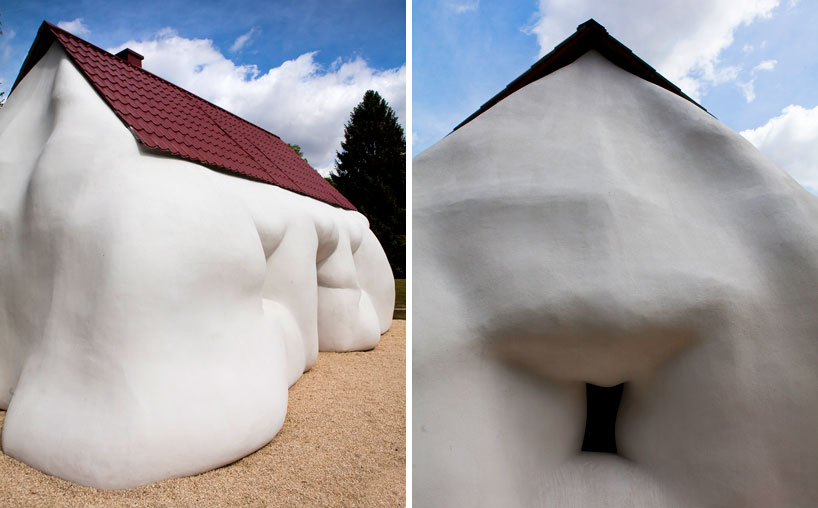
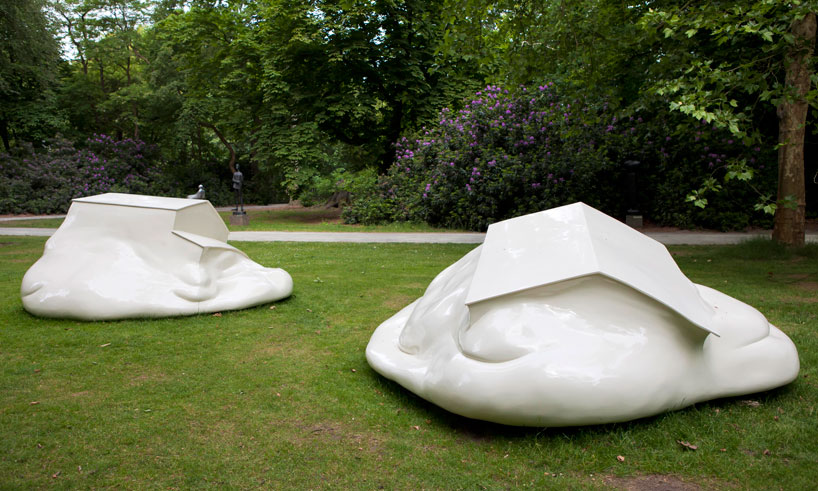
Using materials of bronze and polystyrene, wurm gives human-like
qualities to non-living objects such as houses (‘fat house’, ‘melting house’),
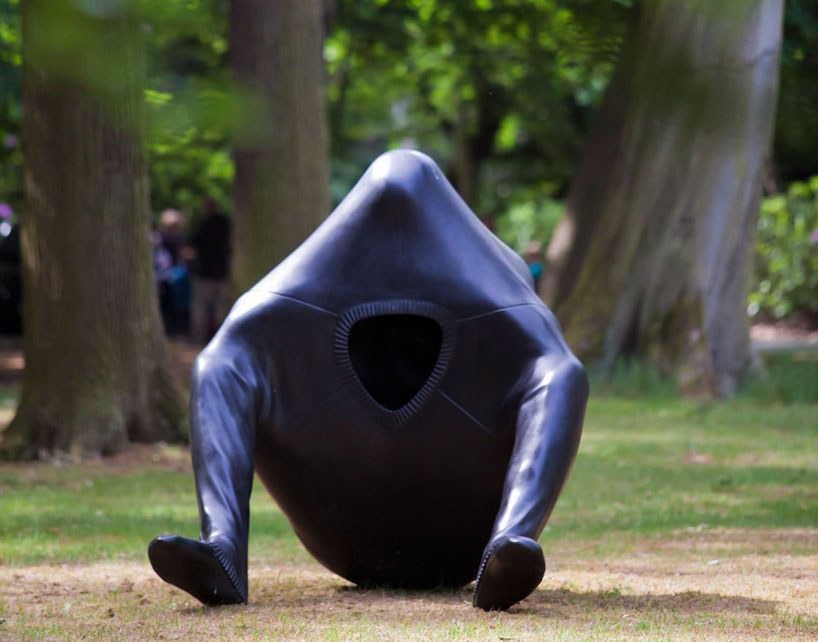
‘big gulp’ (2009)
image © jesse willems
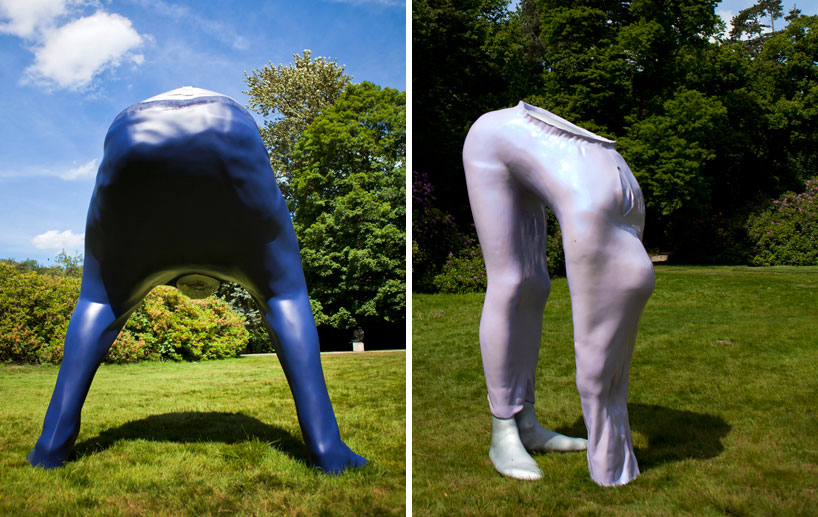
images © jesse willems
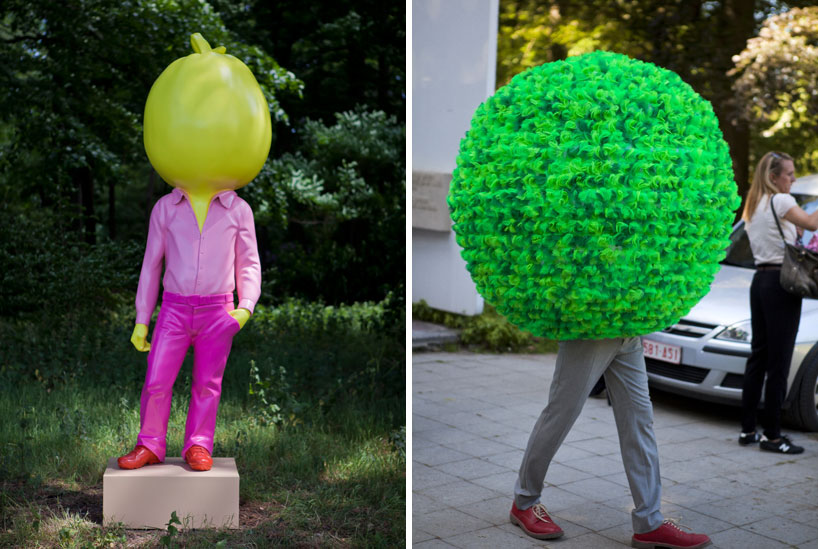
walter van bierendonck is in the creation of living ‘performative sculptures’,
or five hired actors wearing oversized costumes made of ruffled tulle,
about volume and space, then anyonecan be an artwork, simply by adding
or removing clothing and weight.
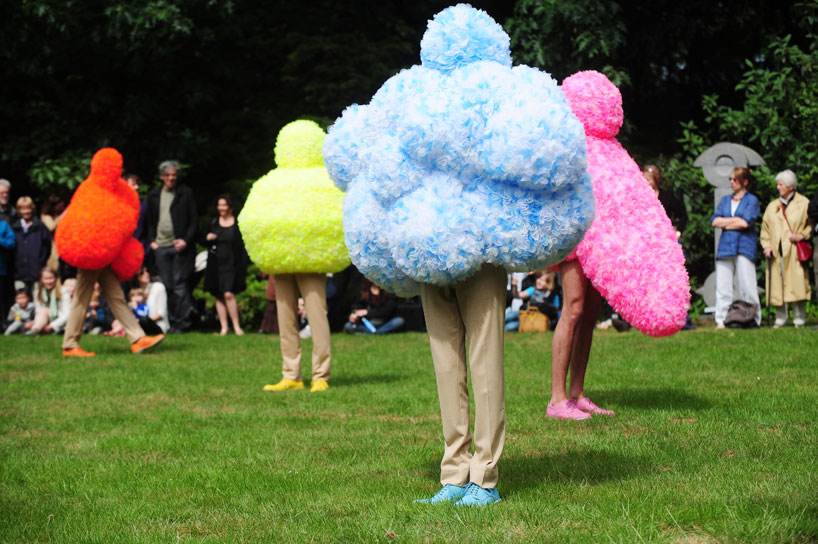
image © gazet van antwerpen / jan van der perre
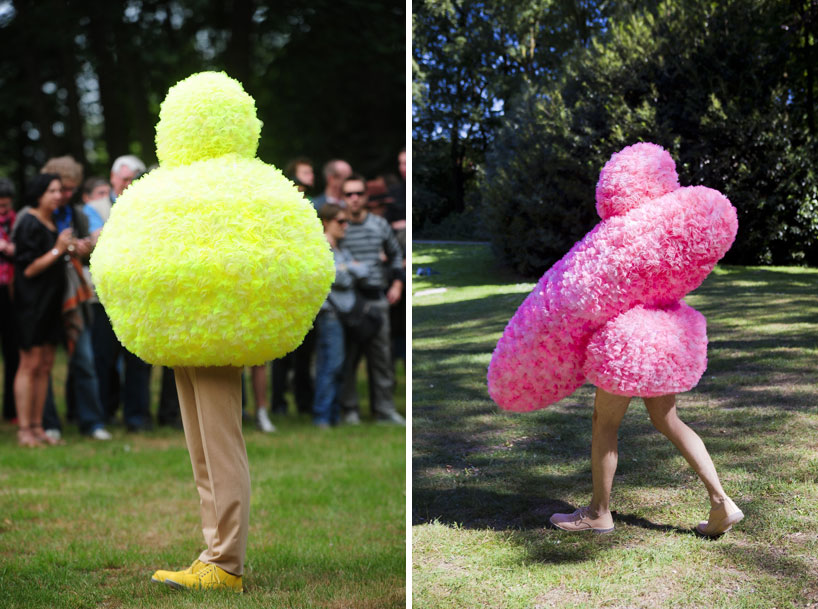
(left)

performative sculpture (2011)
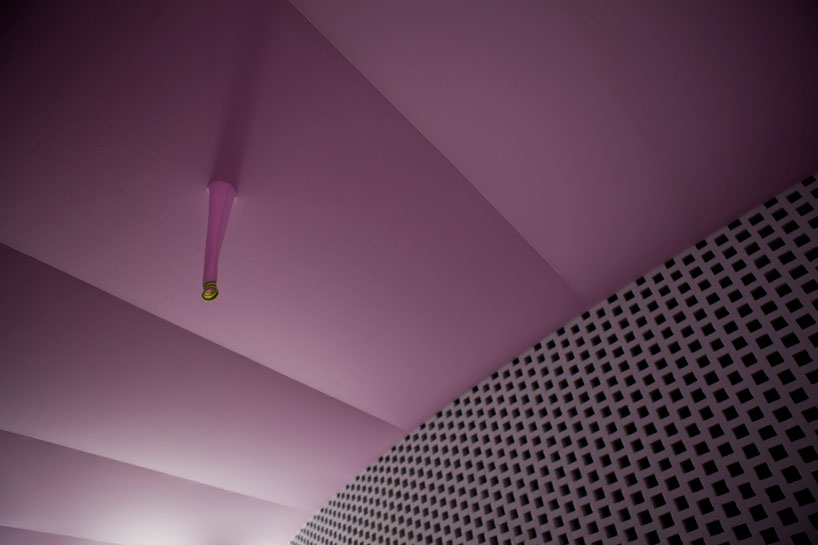
‘knitwear ceiling’
image © studio wurm
The artist uses textiles inside the museum’s Braem pavilion as well,
creating a gigantic ‘sweater’ by covering the ceiling in pastel purple
sculpture, around, in or on the artworks on every day of the exhibition.
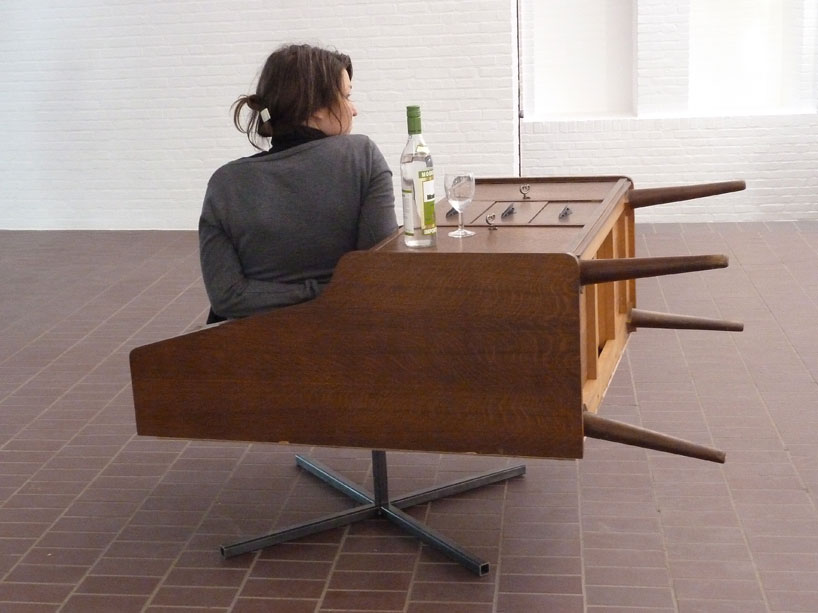
performative sculpture
image © studio wurm
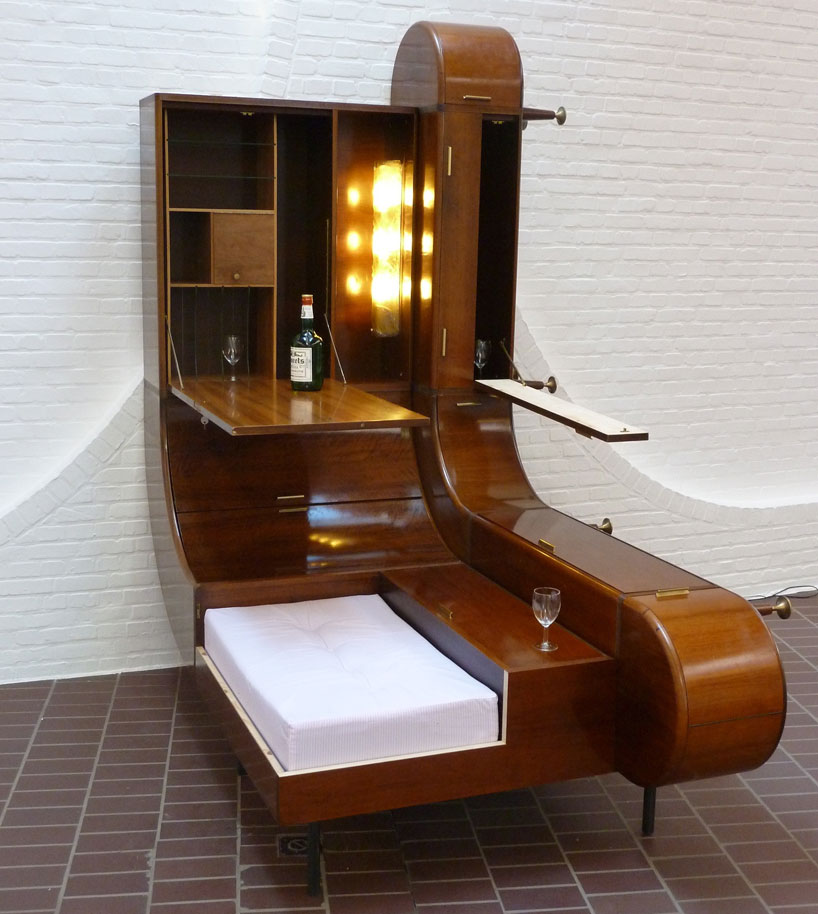
performative sculpture
image © studio wurm
The possibilities of sticky notes
Following my recent blog post showing my sculptural experiment with sunflower seeds and sticky notes, a friend sent me the link to this video where sticky notes are taken to the extreme.
Wednesday, 17 February 2016
Sunflower seed sculptural macquettes - contrasting colours and surfaces
This form began as a flat slip of paper but as I applied the rows of sunflower seeds to the surface, the paper began to curl naturally.
Here I have used black sunflower seeds on one side and white sunflower seeds on the other.
I enjoy the contrast between the natural colours of the sunflower seeds and the overtly unnatural fluorescent post it notes. I also appreciate that the direction of the post it notes is at odds with the direction of the post it note
Sunday, 14 February 2016
MEANWHILE - Newcastle University 1st Year MFA Exhibition
Last night was the preview of the 1st Year Newcastle University MFA exhibition, MEANWHILE...
The exhibition is located in a number of the exhibition spaces within the Fine Art department of Newcastle University.
Each artist has contributed a number of works and a variety of media are used.
Hannah Cooper's manipulation of materials produces beautiful results. Threads of delicate melted glue hang from the ceiling of the Atrium. In the Long Gallery Hannah exhibits a couple of works made from creased paper (the description does not do it justice-watch out for photos in later posts), a paper sculpture with feathers pierced through, and a clay sculpture. There is a sensibility to the way that the materials are manipulated.
Similarly, Mehan Fernando's exquisite photorealist oil paintings are positioned carefully on the smooth surfaces of the pieces of wood, with the figures aligning with the natural wood grain or markings on the surface. It is hard to be disgusted by the deformed specimens that feature in the paintings because of the demonstration of immense skill in the way he paints. In the Tic Space Mehan has ventured into less familiar territory and installed a number of objects on the wall and a few clay sculptures that resemble spines.
A couple of Anna MacRae's small creatures are sneakily lurking in the Long Gallery and Tic Space, but her larger sculptures occupy the Project Space. In contrast to Mehan's highly controlled and precise oil paintings, Anna's work has a more immediate and experimental appearance. That said, the care, attention to detail and rigorous thought that goes into making the work is evident. The lighting plays a huge part in setting the dramatic scene for the monochrome forms made from materials such as cardboard, parcel tape, foil, latex and paint. The three components have a relationship with each other, taking on different characters.
Pipi Lovell-Smith exhibits a sound work in the Tic Space and has two flat screen monitors playing her work in the Long Gallery. One monitor shows a collaged stop motion animation in which the background scenery resembles a tourist attraction. The action comes from birds flying overhead, a tourist dancing and people taking photographs of the monument in the background. The other monitor has two screens, both showing the same couple in a rowing boat, but from different perspectives. The boat in one of the screens moves from left to right and the boat in the other screen enters the screen on the right and travels to the opposite corner of the screen. Something fascinating happens at the end; a kind of reversal.
James Joseph Lloyd has a projection in the Tic Space, a painting in the Long Gallery and a painting in the Atrium. I have been used to seeing the two paintings in close proximity to each other in the studio, so they are seen very differently when separated and exhibited in different rooms.
It is obvious that the group have worked together to curate the exhibition, and the negotiation of space has been carefully considered.
Subscribe to:
Posts (Atom)




























